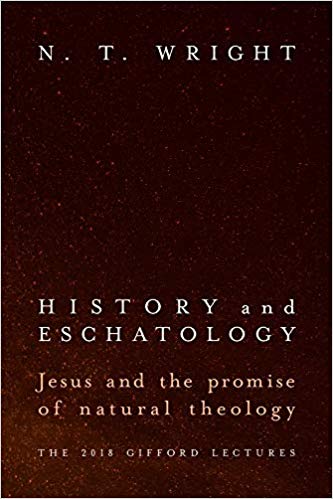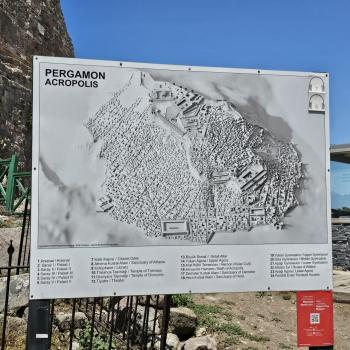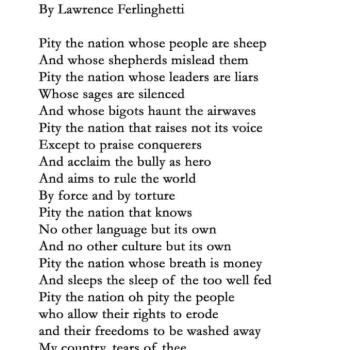On p. 155 Tom sums up how he sees the problem of modernity in dealing with Christ– “epistemology has tried to do without the notion of ‘love’, producing historical study a false antithesis of rationalist certainty-hunting on the one hand and skepticism on the other; Jesus and his first followers have been portrayed as holding an imminent-end-of-the-world belief which has distorted other features; and the question of God and the world, of which natural theology is one aspect, has suffered.” (p. 155). The result is Epicureanism banishment of God and his work from the human sphere has reigned, which distorted both history and eschatology, with the latter simply being rejected on the assumption that poor Jesus and Paul thought the world would end soon, and they were wrong.
Wright, in fact is arguing that our worldview should in key ways be much like the ancient Jewish worldview and that we should not caricature that ancient worldview as hopelessly wrong and out-dated. Here’s how he puts it: “We must not caricature ancient Jews and Christians as though they were naive cave-men, believing in a three decker universe with ‘supernatural’ upstairs,’natural’ downstairs, and something nasty down in the cellar….Perhaps some did take it literally, but that is not the main point. The main point is that Second Temple Jews assumed that heaven and earth were intended to overlap and did in fact overlap in certain contexts [‘i.e. in the temple or tabernacle where God’s presence was believed to dwell, or the sabbath which was seen as a foretaste of the final peace in the kingdom at the eschaton].” (p. 159).
“Jesus and the early Christians were not Epicureans, taking for granted a cosmos in which heaven and earth were radically separated. Nor for that matter were they Stoics, seeing the presence of divinity in all things. Nor certainly were they Platonists… like Israel’s scriptures they celebrated the goodness of creation and looked for its renewal.” (p. 160). Wright goes on to make his case for ‘overlap’ by focusing on the way the Temple was viewed as the juncture between heaven and earth, so a juncture in space, whereas the sabbath was a juncture in time where the foretaste of the future eschatological bliss could be enjoyed. I am less convinced than he is about the reading of the temple idea back into the creation story about a garden and two humans, and notice in Rev. 21-22 we have the garden and the river, but no temple.
More helpful is the discussion (pp. 170ff) of how humans, as bearing the image of God, are a point of contact or place of overlap between God and the world. As Tom says, being made in the image of God is not merely a statement of ontology, it is a statement of vocation we are to tend the garden, we are to rule the earth as God’s vice-regent and so on. God is a “working through humans God. He delights in delegated authority.”
And he is right in saying “the point of the life of heaven being brought into conjunction with earth is not to abolish earth, or to snatch humans away from it. as has routinely been assumed in the last two centuries, but to fill the earth with divine glory, or at least to give advance indications of that eventual intention. And the conjunction and the advance glory-filling are to take place through the work of the image-bearers, specifically the priests and kings.” (p. 175). Though he does not say so, one of the places where this preview of coming attractions can most readily be seen is in true worship of God. What he does say is the cross is where we best see the conjunction. “The cross would now be the dangerous location where heaven and earth would meet, thus taking the place of the ziggurat, of Noah’s Ark, of the Tower of Babel, of Jacob’s ladder– and now also of the wilderness tabernacle, and the Jerusalem temple whose destruction Jesus had announced in symbolic action and apocalyptic prophecy.” (p. 179).
I would say the cross is where we see God’s justice meet human injustice, God’s love meet human’s hate, God’s life poured out for us meets human propensity to kill, or have a death wish, God’s redemption meets human God forsakeness, forgiving sin and rescuing the sinner.












